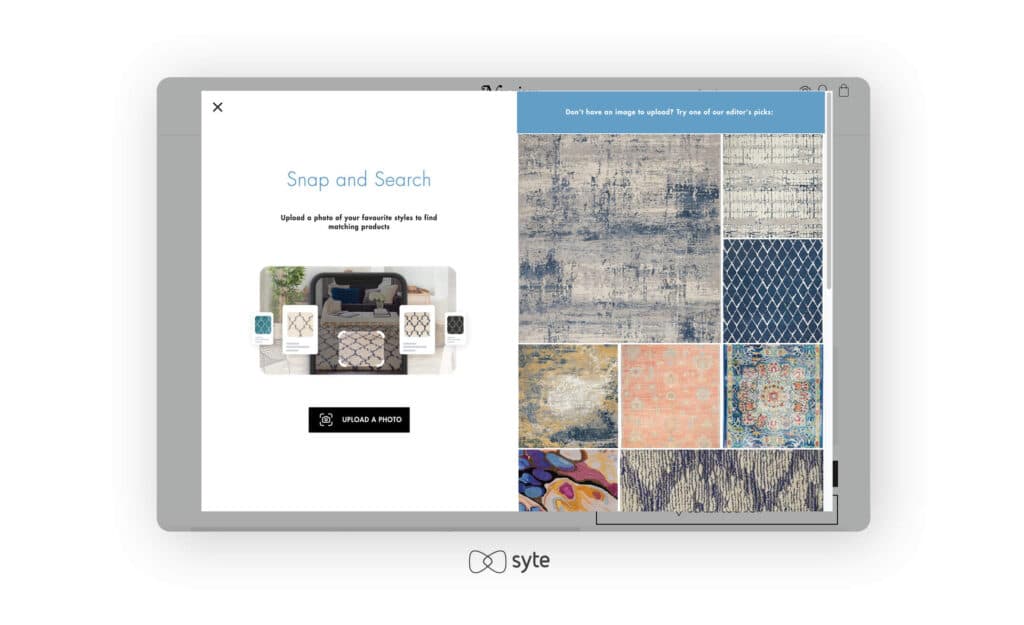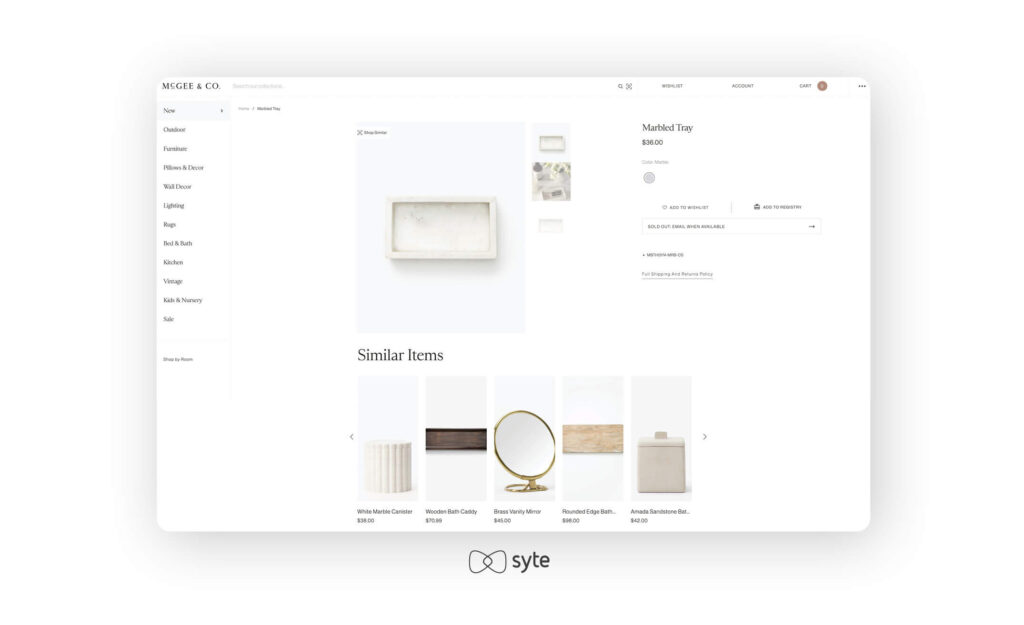In 2022, 70% of all online shopping carts failed to make it to the checkout stage. In other words, seven out of every ten buyers will drop off your site before making a purchase.
What’s more, 74% of customers use multiple channels when completing a transaction, which creates a large margin for error. Even after a brand seemingly addresses all moving parts of the digital shopping journey, buyers still manage to drop off at some point in the sales funnel, which can be quite frustrating for eCommerce businesses.
Retailers might be able to uncover where customer drop-off happens but don’t always have deep insights into why shoppers don’t make it to the checkout screen or return to purchase.
To this effect, understanding every area of the customer experience and identifying roadblocks is essential because it will empower you to maximize every touchpoint, address blind spots, and improve conversion.
It All Begins With Discovery
The first hurdle lies in customers not being able to find your brand or products — whether through search engines, on-site search, or website navigation.
Roadblock #1: Undiscoverable Website
Retailers’ keyword research and SEO strategy may not be in tip-top shape, which makes it more difficult for customers to find products. This is critical, with 73% of consumers completing their research online through search engines, which are part and parcel of product discovery. For consumers, Google Search easily connects the dots between gathering information, comparing prices, reading reviews, and finding new retailers to buy from.
Tip:
Harness the power of visual AI, which adds more metadata to each of your products, provides accurate descriptions, increases the chances that your product detail pages (PDPs) rank well, and optimizes paid search results.
Roadblock #2: Poor On-Site Search
Shoppers don’t always have the words to describe what they’re looking and on-site search often delivers sub-par results that aren’t relevant to the customer’s search term.
Tip:
Image searches that surface results with a single photo can win over customers who have grown accustomed to saving pictures from online searches and social media. It’s known that improving site search is crucial, as shoppers who use it are already 2-4 times more likely to convert.
For home decor company Nourison, its online camera search functionality makes it easier for users to find items through pictures. The brand also inspires visitors through photo galleries, encouraging customers to explore its product catalogue. As a result of implementing visual AI technology, the retailer saw an 8x rise in CVR and 124% higher ARPU.

Roadblock #3: Unintuitive Website Navigation
About 31% of sites have mediocre navigation, with categories that are either too broad or too specific. It goes without saying that if your website is difficult to navigate, customers will simply head to another online retailer.
Tip:
Brands can remedy this with simpler categories that lead to more filters. Drop-down menus littered with categories can be difficult to interact with. But if you add visual elements to them, as Zaful did with its bikini illustrations, you can increase the chances of shoppers clicking through to other parts of your website.
Roadblock #4: Slow Page Load Times
Customers won’t have the patience to wait for your site to load. One in two customers will leave if it takes more than three seconds. If your site is slow or unresponsive, customers won’t even get to the stage of exploring your product catalogue.
Tip:
Regularly check the performance of your site and compatibility across desktop and mobile to accommodate your visitors’ browsing preferences.
Roadblock #5: Product Search Deadends
52% of customers will switch to a competitor if they have a single negative experience. Turning up zero results can be frustrating for shoppers and may lead them to shop elsewhere. This challenge can be addressed head-on by populating dead-end pages with visually similar suggestions or related product recommendations to inspire shoppers.
Tip:
McGee & Co., an interior design brand, struggled with out-of-stock scenarios due to high consumer demand. The brand implemented recommendation carousels on its out-of-stock pages to keep customers moving through its online shop

Easing the Evaluation Process
In the next stage, customers will be evaluating whether or not they want to make a purchase, which entails reading product descriptions and customer reviews, comparison shopping, and checking user-generated content (UGC). Each of these touchpoints can turn away customers and cause a dropoff in interest if not done right.
Roadblock #1: Weak Product Descriptions
Baymard Institute found that users will quickly move on if they encounter more than one insufficient description. What’s more, when sites don’t provide the information users are seeking, it leads customers to make incorrect assumptions about a product – sometimes resulting in frustration and unnecessary returns.
Tip:
Information such as product dimensions, materials, and care requirements are important so customers can make informed decisions. Size guides and fit notes according to pictured models are also useful, as are delivery and returns details. For example, you might add, “This piece fits true to size – take your usual size” or “The model is 178cm and wears size 34.”
Roadblock #2: Lack of High-Quality Images
According to Threekit, 83% of shoppers rank product imagery as the top factor influencing their purchase decisions. The absence of high-quality product photos makes it difficult for customers to shop online and make informed decisions before purchasing.
Tip:
360-degree product views provide granular product details and give customers the feeling that they are inspecting the item in person. Augmented reality (AR) and virtual reality (VR) also improve shopper trust, with 66% of users reporting these features increase confidence in their purchase decisions.
Roadblock #3: Absence of Social Proof
If you don’t include user-generated content on your site, you will miss out on the opportunity to lend authenticity to your brand. 93% of marketers agree that consumers trust content created by customers more than content created by brands.
Tip:
By displaying genuine photos and videos from other customers on product detail pages (PDP), shoppers can get a better idea of items.
On La Redoute, every PDP includes user reviews with star ratings based on value, design, and convenience. It also shows how many customers recommend the product.
Roadblock #4: Limited Knowledge of the Vertical
For many customers, shopping for specific products online can feel daunting when they don’t have enough knowledge or don’t know where to begin. For jewelry shoppers, this could be limited information on diamond cuts and raw materials; or for home decor customers, it could be a lack of experience in interior design and styling.
Tip:
When brands provide relevant and trustworthy content online, they increase consumer preference by more than 70%. Educate your shoppers on finding the perfect products, as H. Samuel does with its engagement ring guide. Evergreen content can drive conversion and make you a trusted brand.

On the Path to Checkout
At this point, customers will have wrapped up their research and are on the way to checkout. But this is not a guarantee they will make a purchase — a handful of hurdles may still be lurking behind the scenes.
Roadblock #1: Too Many Steps Before Payment
Too many steps before checkout can be problematic, and at least 17% of shoppers abandon their carts for this reason. The more steps involved in the checkout process, the greater the likelihood of customers rethinking their decisions, becoming frustrated, or leaving the site.
Tip:
Take the time to analyze your checkout process, zero in on the barriers to purchase, and keep the checkout flow to 7-8 form fields. Missguided sets a good example, as the retailer clearly maps out the path to purchase with short and easy steps.
Roadblock #2: Requiring Sign-Up Before Purchase
Websites that require customers to create an account lose shoppers looking for a hassle-free and fast checkout. For 24% of customers, account sign-ups deter them from making a purchase. Almost half of consumers prefer to not share their personal information unless necessary.
Tip:
Menswear retailer Harry Rosen enables shoppers to check out as guests, which makes the path to purchase simple and quick.
Roadblock #3: Lack of Cost Transparency
Customers want to check out with all costs calculated upfront. Almost half of US customers who abandon their carts say it’s because they couldn’t see total costs ahead of time.
Tip:
Ardene is straightforward in its approach, with a section dedicated to shipping and returns details right on the PDP, so shoppers know what’s to come. Some retailers also include prepaid customs and duties for international customers so shoppers have a complete picture of the total costs.
Fostering Brand Loyalty Post-Purchase
The customer journey doesn’t end after a purchase, and it’s up to you to turn shoppers into repeat clients. After-sales services can communicate that your brand is reliable by involving customers through feedback emails and surveys.
Roadblock #1: Shoppers Don’t Feel Heard
Retailers often miss out on the opportunity to improve their products and customer experience by gathering shopper feedback – whether in the form of reviews, customer support chats, or surveys.
Tip:
Message customers within two weeks after order delivery for feedback. Sixty-five percent of shoppers would be motivated to share reviews after receiving a request from a retailer. About 34% say they would be more likely to provide feedback if the request is made through email. VIDA goes the extra mile by offering an exclusive discount to anyone who participates in its survey.
Roadblock #2: Shoppers Forget About Your Brand Post-Purchase
Online shoppers have countless options to choose from in a saturated, competitive marketplace. Many companies miss out on keeping their brand top of mind by looping in customers about upcoming sales and exclusive discounts and reminding them about items saved in their wishlists.
Tip:
The global loyalty management market is currently valued at $5.57 billion but is expected to balloon to more than $24 billion in 2029. Invite shoppers to join your loyalty programs to earn reward points. Browns Fashion, for example, has tiered club memberships that offer perks at each level.
In Summary
Monitoring customer feedback is one piece of the puzzle. But actually listening and taking steps to improve processes makes all the difference. There’s much to be gained by analyzing and understanding your customers’ shopping journeys and identifying roadblocks along the way.
By addressing bottlenecks at every step — from discovery and product evaluation to the checkout process and post-purchase flow, you will be better equipped to create customer experiences that lead to higher conversion, brand loyalty, and repeat purchases.